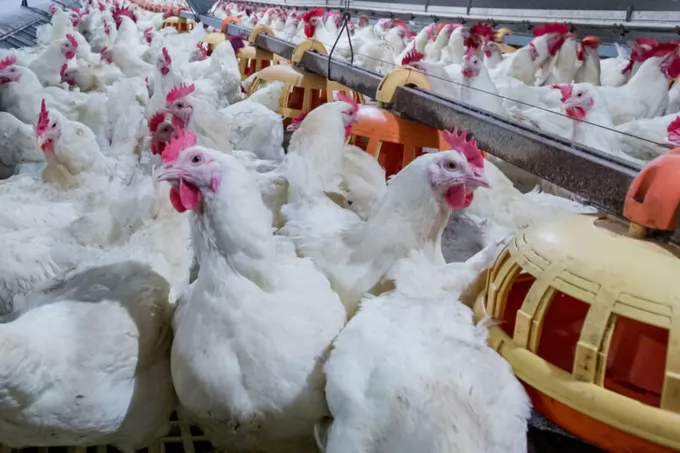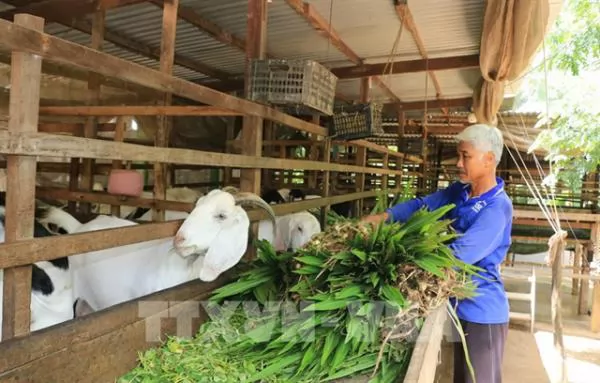US poultry industry projections, state ban on cultivated chicken, new funding, lice findings

For the poultry and egg sector, the USDA states that assumptions include no more outbreaks of animal disease, a continuation of existing US and global policies and trade agreements, normal weather and specific macroeconomic conditions. Photo: Canva.
(VAN) The US Department of Agriculture (USDA) has released long-term projections for the nation’s poultry industry, showing a very strong road ahead.
Production of both chicken meat and eggs are expected “to grow steadily through 2033, after outbreaks of highly pathogenic avian influenza sharply reduced the US poultry and egg-laying flock in 2022 and 2023”.
The USDA’s annual 10-year projections, also known as the US agricultural baseline, provide a long-term outlook for major crop and livestock commodities and are based on specific assumptions.
“For the poultry and egg sector,” states the USDA, “assumptions include no more outbreaks of animal disease, a continuation of existing US and global policies and trade agreements, normal weather and specific macroeconomic conditions.”
Poultry remained the most-consumed animal protein in the US, with chicken and turkey accounting for 46% of all red meat and poultry consumption by volume in 2023. “In addition, the US is the world’s second-largest exporter of chicken behind Brazil. In 2023, nearly 16% of US broiler production was exported.”
Due to avian influenza, US egg production fell from 9.4 billion dozen in 2019 to a 5-year low of 9.1 billion dozen in 2022. Looking forward, “consistent with the baseline presumption of no further avian influenza outbreaks, US egg production was projected to recover in 2024 and continue to expand to a record 10.8 billion dozen by 2033” as the population and per capita consumption grow.
Legal battle over ‘meat’
Whilst ‘cultivated’ chicken, beef and other types of meat have been sold legally in the US since June 2023, in July 2024, the governor of Florida banned it in the state because this form of protein “is designed to be a threat to agriculture as we know it”.
The ban, however, is being challenged by the Institute for Justice, a non-profit law firm, and Upside Foods, one of the country’s leading cultivated meat companies. Together they are challenging the ban on the basis that it is unconstitutional and undermines the principles of a national common market.
New research funding
Poultry genetics firm Cobb-Vantress has revealed the recipients of its 2024 research grants, the second year of the programme. The projects include:
Prophet AI, researching ‘virtual data-powered artificial intelligence for precision health phenotype tracking’.
Queensland Alliance for Agriculture & Food Innovation at The University of Queensland, Australia, working on ‘digital twins’ in broiler production.
North Carolina State University, focusing on understanding the effects of early pullet nutrition on egg production and other factors.
University of Wisconsin-Madison, developing a broad-spectrum targeted Salmonella bacteriophage biosanitiser for hatcheries.
Housing Research
Scientists at the University of California-Riverside have found lice counts are much higher in cage-free layer hen housing systems compared to caged flocks.
To help detect mite infestations in chickens, entomologist and lead study author Dr Amy Murillo previously led a team of entomologists, computer scientists and poultry scientists in creating a new insect detection sensor.
HD
(PW)
Maybe you are interested

Farmers in Ba Ria-Vung Tau earn high profits thanks to high-tech shrimp breeding
More farmers in the southern province of Ba Ria-Vung Tau are seeing much higher profits by using advanced farming techniques to breed shrimp.

Ninh Thuận expands marine aquaculture
The south-central province of Ninh Thuận is focusing on farming high-value marine fish, lobsters and bivalve mollusc to improve farmers' incomes.

Goats pull Đồng Tháp Province farmers out of poverty
Breeding goats has helped many farmers in the Cửu Long (Mekong) Delta province of Đồng Tháp escape poverty and earn a steady income since the animal is easy and inexpensive to raise.





